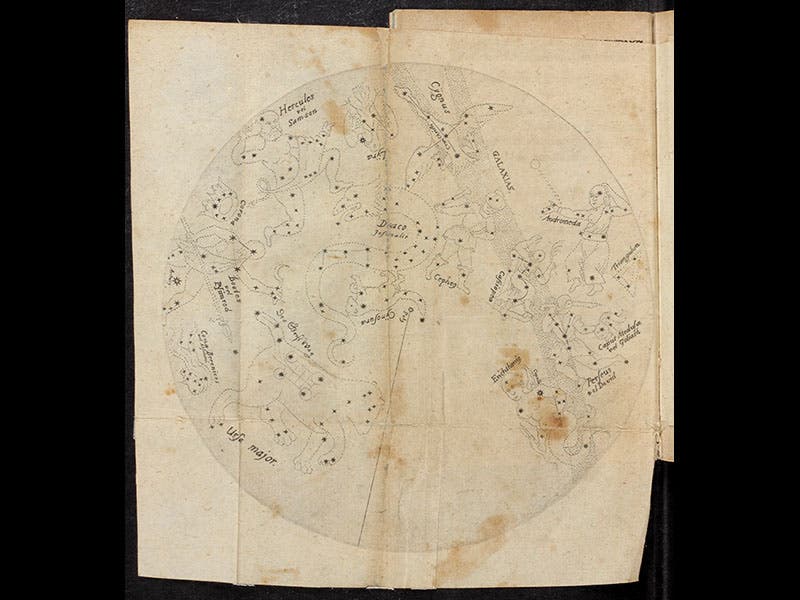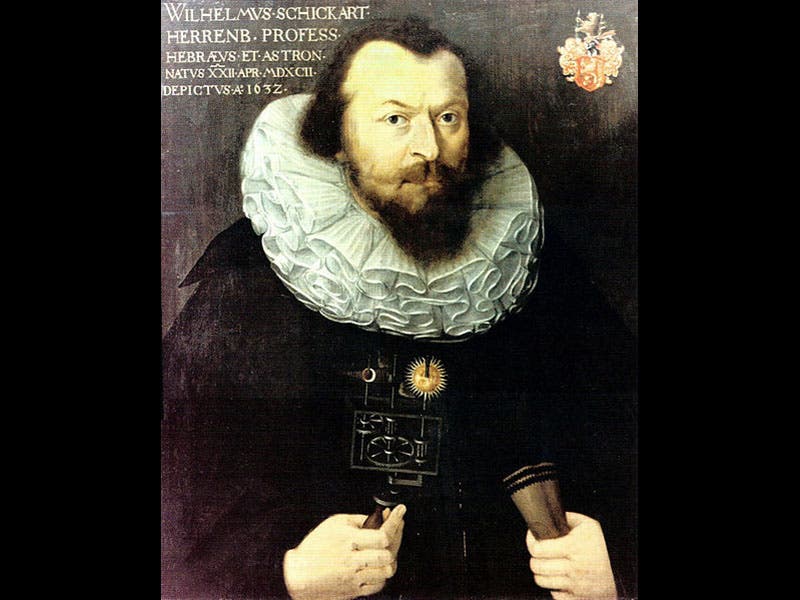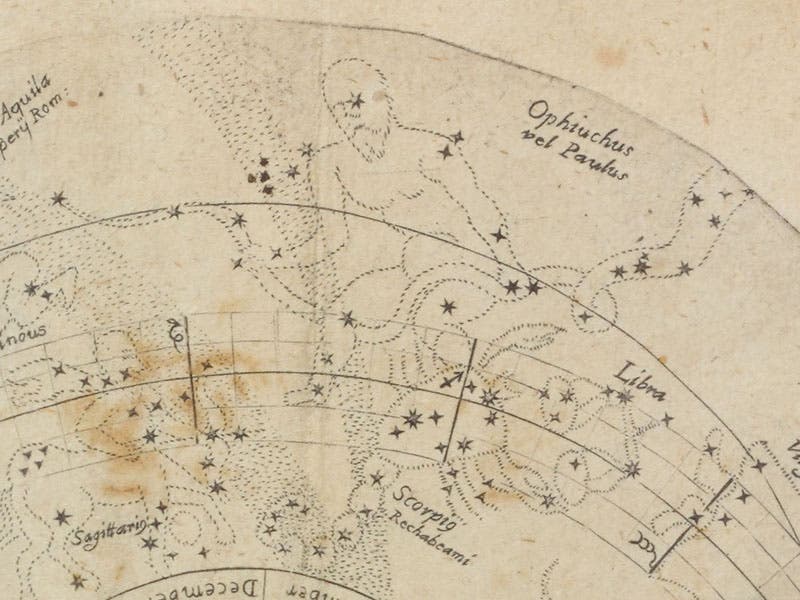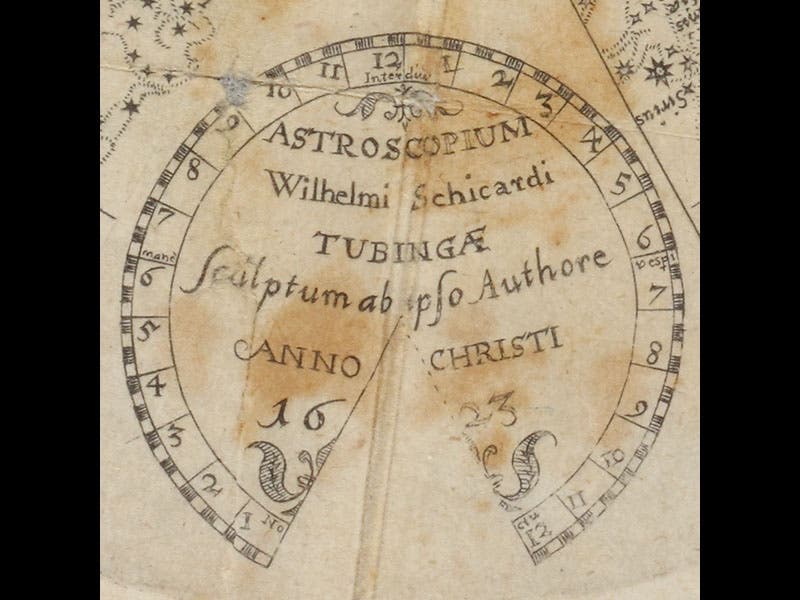Scientist of the Day - Wilhelm Schickard
Wilhelm Schickard, a German astronomer, was born Apr. 22, 1592. Schickard attended the University of Tübingen, where Johannes Kepler had gone to school, and the two men met in 1617 and apparently hit it off quite well. Schickard was also a skilled engraver and woodcutter, and he did some of the woodcuts for Kepler’s Epitome of Copernican Astronomy (1618-21). In addition, Schickard was a gifted linguist (he became professor of Hebrew at Tübingen) and an ingenious inventor; he is known in computing circles for having designed one of the very first mechanical calculators.
But we honor Schickard today because he compiled a pair of star maps. They are unusual in having a conical outline, and were apparently intended to be fashioned into a pair of star cones. They appeared in a book, Astroscopium, that was published in 1623. The work is very scarce; there is only one copy in the United States, and it just happens to be in the History of Science Collection of the Linda Hall Library. The book is quite tiny, not even 5” tall, so the two star maps are carefully folded up in the front of the book. We see above the first plate, showing the northern stars (first image), with a detail of Cygnus and the Northern Cross (third image). The second map depicts the southern stars (fourth image), with one detail of Ophiuchus and Scorpio (fifth image), and another showing the cap for the celestial south pole (sixth image), which provides author and title information for the map, in case you opt to cut it out and assemble it as a conical paper globe.
Many years ago, we mounted an exhibition of star maps, Out of this World, and in 2007 we did a follow-up exhibition, displaying a small number of celestial maps that we had acquired since Out of this World; we called the sequel Further Out. If we ever put together a second sequel (Really Far Out?), Schickard’s Astroscopium, which we acquired in 2010, will be the centerpiece of the display.
Dr. William B. Ashworth, Jr., Consultant for the History of Science, Linda Hall Library and Associate Professor, Department of History, University of Missouri-Kansas City. Comments or corrections are welcome; please direct to ashworthw@umkc.edu.












